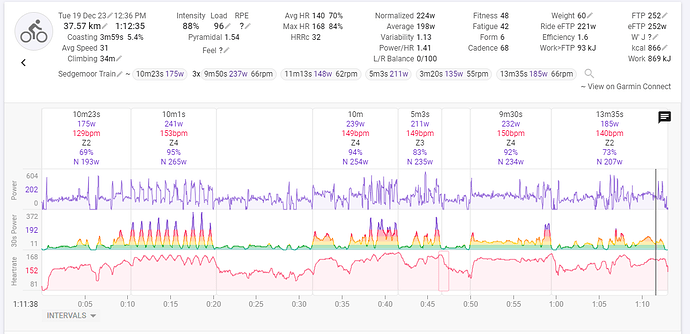The above questions are, I think, good ones. I didn’t manage to find the full paper, but I did find enough to answer a few questions.
First, it’s worth noting that this is a paper from 1977. Things have moved a looooong way in the meantime. That’s pretty clear from what I was able to read of the paper. I was amused by the paper proper opening with a discussion of rats adapting ‘quite rapidly’ to endurance exercise training. I’m just imagining an expert in rat physiology convincing them to run around fast enough to use the maximum oxygen uptake.
To the crucial questions, though. There were 8 subjects. Two were sedentary. Four had not been training regularly but were involved in recreational sports. One was a college football player who was not currently training (presumably out of season?), leaving only one who ‘performed moderate endurance exercise’ three times a week for years. None of them, thus, are likely to have been very well trained in endurance sports, at least not compared to most of us in this forum. I see no information about their ages in what I have of their paper.
Nonetheless, and I think not surprisingly to many of us on the forums, while everyone’s VO2 max increased, the football player and the endurance athlete, had the lowest increases as a percent compared to their starting point. Without doing the math, I’m sure that this is not statistically significant, though from everything I’ve heard, that isn’t surprising.
More crucial, I think, though it hasn’t been raised, is that this paper seems to say nothing about what type of workout is the best. It is not comparing 6x5min VO2 max training to other lengths. (Again, I only have access to the first two pages, but given what I can see, I don’t expect that to have come up–though perhaps the authors talked later about what they chose that particular effort).
Instead, the paper is purporting to show that VO2 max improvements continue on linearly instead of slowing down. I’ll more than forgive these authors because the research is so early even though we know that that are caps and VO2 max improvements cannot actually keep going up. Heck, I’m pretty sure that the Cog has talked elsewhere in these forums about how you don’t do VO2 max blocks forever. I’ll also forgive the original authors for missing that their most trained (though still not very trained) subjects had the lowest increases, thus raising questions about their paper’s conclusion.
I am sure that other papers can be found arguing for specific VO2 max workouts (though I bet there are different papers with different preferred workouts), but this particular one is not useful for the current discussion.

